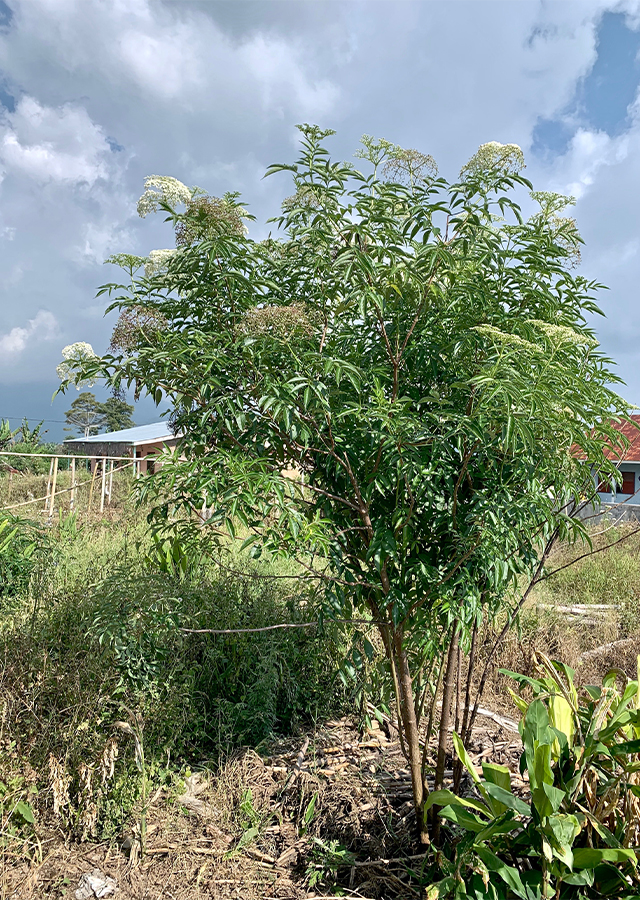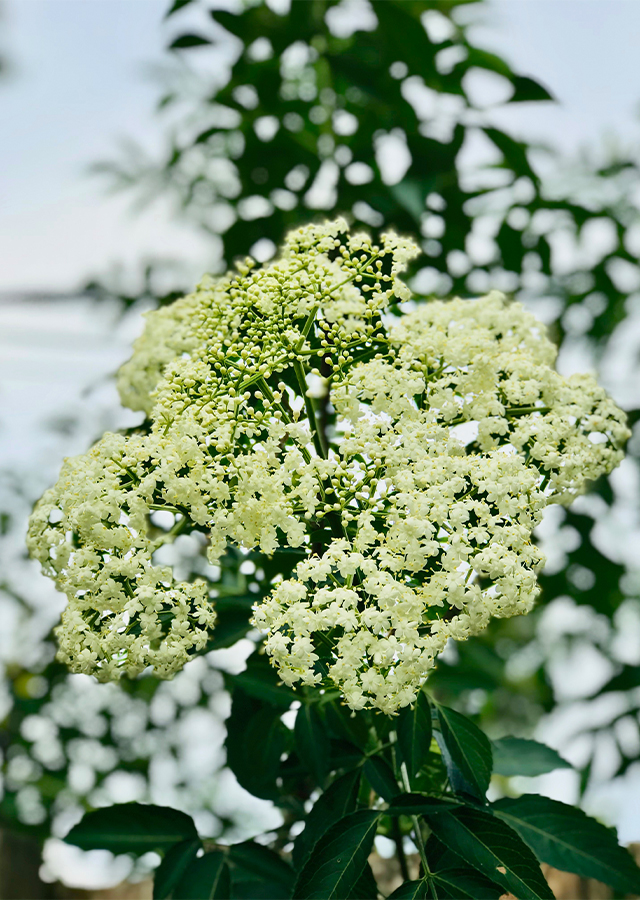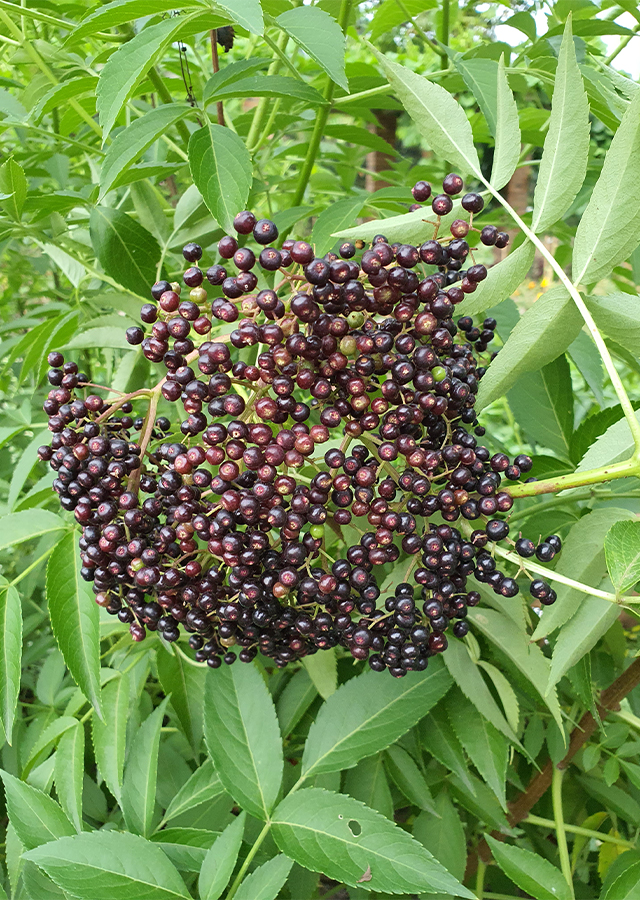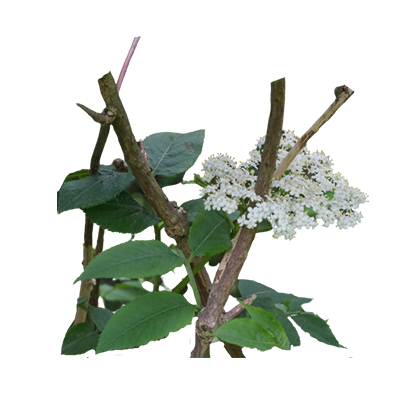Javanese Elder
Sambucus javanica Reinw. ex Blume
Viburnaceae
Location in our garden
Principal



Synonym
Ebulum javanicum (Reinw. ex Blume) Hosok.
Phyteuma bipinnata Lour.
Sambucus angustifolia Noronha
Habitus
Shrubs. Herbaceous low shrub, perennial, growing 1 - 3 m tall
Part Used
Leaves
Roots
Stem
Growing Requirements
Full Sunshine
Need Shade
Habitat
Riverbanks
Forest
Mountains
Shrublands
Grassland
Overview
It is present in most or all of Luzon, Mindoro, Catanduanes, Leyte, Negros, Panay, Mindanao provinces, as well as China and Malaya in India. An
interesting large shrub with beautiful flowers and edible fruit. For local medicinal usage, the plant is often harvested from the wild, and probably also as a food.
Vernacular Names
Shuo huo (Chinese), Hieble (France), Attich (Germany), Kerak nasi (Malaysian), Engos (Portugal), Ta si ga jeu (Thailand)
Agroecology
It also happens in old clearings and damp thickets in primary forests, mostly at medium altitudes, ascending to 2,000 meters. Tolerates most soils, like chalk, but prefers a moist loamy soil in a sunny location. Tolerates marine conditions and atmospheric emissions. Plants in this genus are notably resistant to honey fungus.
Morphology
- Stem - obviously striate; pith white; lenticels inconspicuous.
- Leaves - have 3 to 8 pairs of opposite leaflets and a terminal leaflet. The leaflets are small, oblong-lanceolate, 5 to 20 centimeters long, 1.3 to 5 centimeters high, marginally dented, pointing at both ends
- Fruit - red, subglobose, 3-4 mm in diameter; pyrenes 3 or 4, ovoid, 2.5 mm.
- Flowers - small, cream-white, on terminal clusters (compound umbels), 15 to 30 centimeters wide
Cultivation
- Seed generative propagation; stored seed is likely to germinate better if given 2 months of warmth followed first by 2 months of cold stratification.
- Half-ripe timber cuttings, 7-10cm with a foot. Ripe wood cuttings of the current season's growth, 15-20 cm with a heel
Chemical Constituents
Chlorogen acid (root), flavonoids, phenolics, alkaloids, 19 different anthocyanins, betasitosterol, oleanolic acid, ursolic acid
Traditional Medicinal Uses
- A medicine preparation being researched for hepatoma and pancreatic cancer is using 5-9 percent constituent (derived from the young branches and leaves of the Chinese elder).
- S. Javanica extracts have immunomodulatory functions (in laboratory mice) to suppress inflammation and reduce the occurrence of necrosis
- It is used as a depurative, diuretic and purgative in Indo-China. It is also possible to apply poultice of leaves, berries and flowers to aching parts; also for breast swelling· Rheumatic muscular and bone pains, sprains: use 30 to 60 gms of dried roots in decoction.· Nephritisedema, beriberi edema: use 12 to 25 gms of drug content in decoction from the whole plant.· Pruritus: use whole plant decoction as external washing.
- It is used as a depurative, diuretic and purgative in Indo-China. It is also possible to apply poultice of leaves, berries and flowers to aching parts; also for breast swelling· Rheumatic muscular and bone pains, sprains: use 30 to 60 gms of dried roots in decoction. Nephritis-edema, beriberi edema: use 12 to 25 gms of drug content in decoction from the whole plant.· Pruritus: use whole plant decoction as external washing



